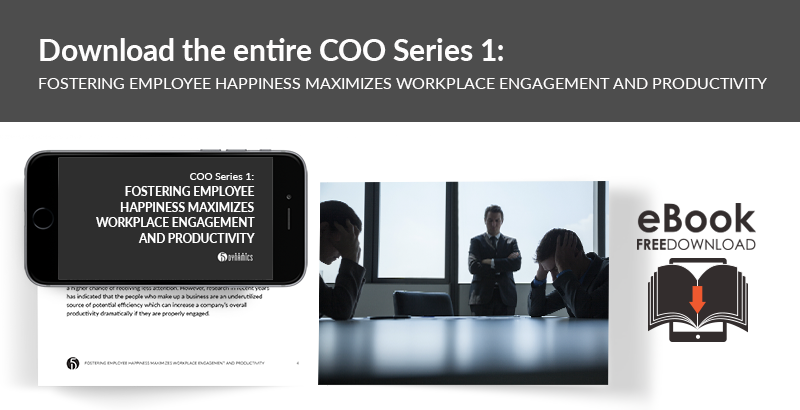Disengaged Employees Lead to Inefficiencies and Low Productivity in the Workplace

Technology is often the answer to which most companies default in order to increase efficiency in the digital age. A focus on technology often means that the human element of business has a higher chance of receiving less attention. However, research in recent years has indicated that the people who make up a business are an underutilized source of potential efficiency which can increase a company’s overall productivity dramatically if they are properly engaged.
Current Trends in Employee Engagement
At the end of the day, people want to be happy at their jobs. The way people function and complete work is rapidly evolving and how companies manage their employees must change to keep up. In 2015, millennials became the largest generation in the US labor force. Technology in the past several years has completely revolutionized the way people work and collaborate. A “traditional” approach to office function and culture will struggle to find its place in a vastly shifting landscape and will ultimately cost companies the happiness of their employees.
In 2014, Gallup surveyed over eighty thousand adults and discovered that 51 percent of employees reported being “Not Engaged” with their current position while 17.5 percent reported being “Actively Disengaged.” Gallup’s data revealed that millennials are the generation least likely to say they “have the opportunity to do what they do best” at work. These findings suggest that by not building teams for productivity and employee retention, and by not utilizing individual strengths, most companies are actively creating disengagement.
The Cost of Employee Disengagement
The idea of a happy employee outperforming an unhappy employee seems like a statement of the obvious, however, management at most companies don’t realize just how much a lack of investment in employee engagement is affecting overall productivity - and their bottom line.
In 2013, Forbes indicated that employees who are not engaged cost the US economy $370 billion. Additionally, McLean & Company’s research puts that number in more localized terms: disengaged employees cost companies on average $3,400 per year per $10,000 in salary. Inversely, Gallup research has indicated that employee engagement and satisfaction has become a key differentiator in regaining and growing earnings per share compared to their competitors in a down market.
Gallup’s statistics also showed that companies having nine engaged employees per one disengaged employee showed an average of 147 percent increasein earnings per share compared to their competitions. The same research indicated companies having three engaged employees per one disengaged employee showed an average of 2 percent decrease earnings per share. This indicates that just six people can make the difference of almost 150 percent.
Team engagement is a pivotal part of a company’s overall productivity, growth, and bottom line. As the traditional workforce landscape begins to change, it is important for companies to adapt and embrace the importance of employee satisfaction and retention. The first step is to recognize that each employee’s perception of happiness varies from person to person, and this in turn affects their performance and interaction with coworkers and peers. Next, it is important to understand the motivation and psychology behind each employee’s perception of happiness as it relates to their style of communication and desired workflow.
5 Dynamics knows how to help your employees identify how they and their colleagues prefer to get things done, collaborate, and communicate. Contact us today to get started in identifying how your employees and colleagues work to know how to maximize their happiness and impact.



